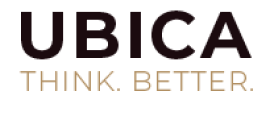
19 Feb Interview Techniques That Get Beyond Canned Responses
According to Elon Musk, a good way to tell if a candidate is fibbing about his or her qualifications is whether they can use a personal story to illustrate a particularly telling experience. “If someone was really the person that solved a problem, they’ll be able to answer the question on multiple levels,” he says. “Anyone who really solves a problem never forgets it.”
Whether it’s because they’re hiding something, or because they’re just plain nervous, job candidates often offer canned responses. One option is to dismiss the person outright, but you may actually be missing out on a great candidate who’s instinctively gravitating toward answers to questions they spent time preparing.
If you’re willing to dig in, take a few risks, or change tactics, you can get a better sense of the real person behind the candidate, and to catch a glimpse of what it would be like to work together. After all, when you get someone to show vulnerability and share a personal challenge that took them outside of their comfort zone, you open up a whole new window into the person sitting across the table from you — or in the case of Musk, identify important warning signs.
Here are three ways to gain insight beyond the resume, beyond the prepared responses, beyond the typical, “tell me about a time you failed” questions.
Practice on-the-spot coaching. Let’s assume you’re interviewing Maria for a chief of staff position. Previously, Maria was a fundraiser for a non-profit. She is professional, articulate, sharp, and enthusiastic.
If Maria is answering your questions too succinctly and you’d like to hear more depth in her answers, give her a coaching directive:
“Maria, can you please answer the same question by telling me a story with an arc?”
If Maria stumbles, or can’t seem to answer a seemingly simple question, such as “can you describe your leadership style?” give her a different coaching directive:
“Let’s change the question. How would your staff describe your leadership style?”
By giving Maria some on the spot coaching, you can assess several character traits:
- Does Maria understand the feedback? Does she “get it” quickly and is she able to take action and redirect in the moment?
- Is she receptive to your feedback, or defensive?
- Does she know how to ask clarifying questions?
- Does she integrate the feedback into the rest of the interview — or does she continue to offer succinct answers or stories without an arc?
If your answer is “no” to any of the above questions, it may give you pause about giving Maria the thumbs up to head to the next round of interviews.
Interview candidates in a group. Southwest Airlines invites groups of people to interview for flight attendant positions at one time, largely to observe the social interactions among candidates during a naturally high-stress situation. Interviewers then ratchet up the stress level by cold-calling specific candidates to answer questions, and creating scenarios which strain social dynamics — such as giving candidates opportunities to prove themselves without throwing others under the bus.
The interviewers then sit back and watch the situation play out, getting answers to such questions as:
- Who emerges as a natural leader, building on the strengths of others or changing the flow of dialogue for the better?
- Who challenges and brings out the best in others?
- Who personifies the spirit and culture of Southwest — taking their work, but not themselves, too seriously?
- Did someone find a way to disagree without doing so at the expense of another candidate?
Conversely, those who are challenged by the collaboration will likely miss out on opportunities to add value to the conversation. They may contradict another candidate or isolate themselves from social interactions before or after the group interview.
Test the fit. Lastly, the interview is a perfect time to test the cultural fit of the candidate. Vosges, a company that sells artisan chocolates and that one of us has worked with, evokes a brand that is hip and creative. This leads some candidates to expect a flexible workplace (i.e. working from home) with little to no face-time. In fact, Vosges’ culture is built on the energy that comes from all employees working in pods throughout the office, and meetings held in beautifully decorated rooms adjacent to the factory floor.
Asking people detailed questions about culture is an effective way to expose work preferences, assumptions, and biases. When a candidate says they’re looking for an entrepreneurial culture, ask them to define what that means, using stories from their past or specific examples about what they want in the future. Do they read “entrepreneurial” to mean a culture that allows employees to run their own group as an independent business, or does it signal a workspace with whiteboard walls and beanbag chairs? Is a culture with a strong sense of community one that offers a general sense of collegiality and group lunches, or one that encourages and creates opportunities for community service and social activities outside the office?
A similar thing happens at Coyote Logistics. Their head of marketing says the company give candidates a manual about its culture, and then ask them to articulate the ways in which it’s fit for them — and ways in which they will enrich it if hired. They want to make sure candidates know what they are signing up for and that’s good for both the company and the potential employee.
On the spot coaching, group interviewing, and cultural fit dialogue gives you more and better information about your candidates. It also ensures that you’ll find stronger employees whose skill sets and mission align with your organization because you’ve seen beyond the resume and beyond the prepared responses. You’ve both vetted one another on a deeper level — making for better hiring and happier employees in the long-run.
Source: Hbr.org



